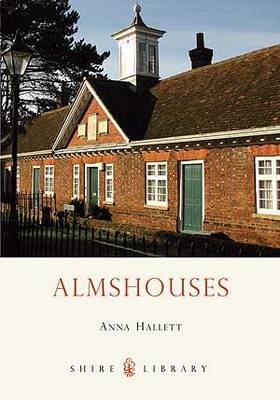Shire Album S.
1 primary work
Book 425
Almshouses, by which religious institutions offer shelter to needy elderly people, come in a variety of architectural styles and often have interesting features, including coats of arms, clock-towers and sundials, and many have chapels and gardens.
It was during the early Middle Ages that almshouses were first established to offer shelter to the needy and the elderly, with the first recorded in York around A.D. 990. Founded upon principles of Christian charity, and linked either to religious institutions or to wealthy philanthropists, their peculiarities have included mandatory uniforms for the beneficiaries, stipulated daily prayers for the souls of the donors and, of course, strictly enforced sobriety. Often quite splendid buildings, almshouses are to be found across the country, and in a variety of architectural styles, with fascinating features including coats-of-arms, inscriptions, dedications, statues, clocktowers and sundials. Many have chapels and gardens, and a number may still be visited and have museums to explain and bring to life their histories.
It was during the early Middle Ages that almshouses were first established to offer shelter to the needy and the elderly, with the first recorded in York around A.D. 990. Founded upon principles of Christian charity, and linked either to religious institutions or to wealthy philanthropists, their peculiarities have included mandatory uniforms for the beneficiaries, stipulated daily prayers for the souls of the donors and, of course, strictly enforced sobriety. Often quite splendid buildings, almshouses are to be found across the country, and in a variety of architectural styles, with fascinating features including coats-of-arms, inscriptions, dedications, statues, clocktowers and sundials. Many have chapels and gardens, and a number may still be visited and have museums to explain and bring to life their histories.
